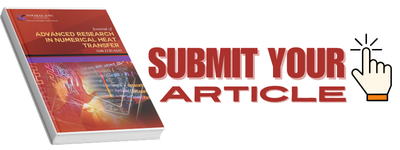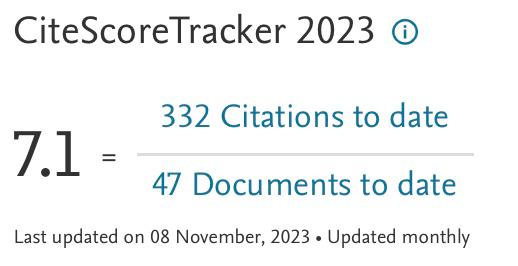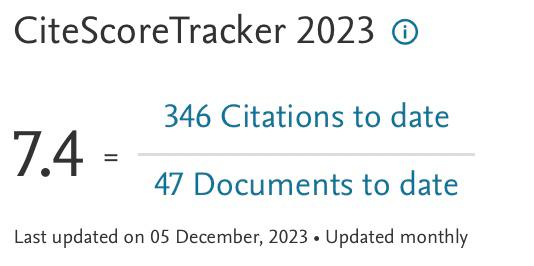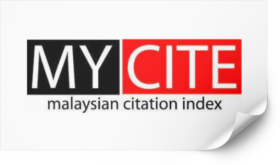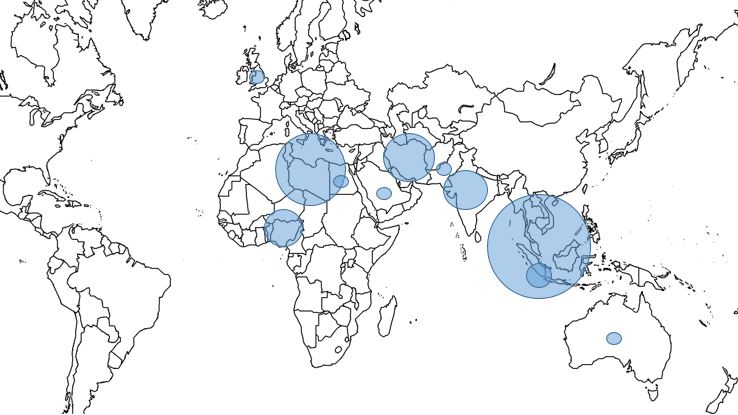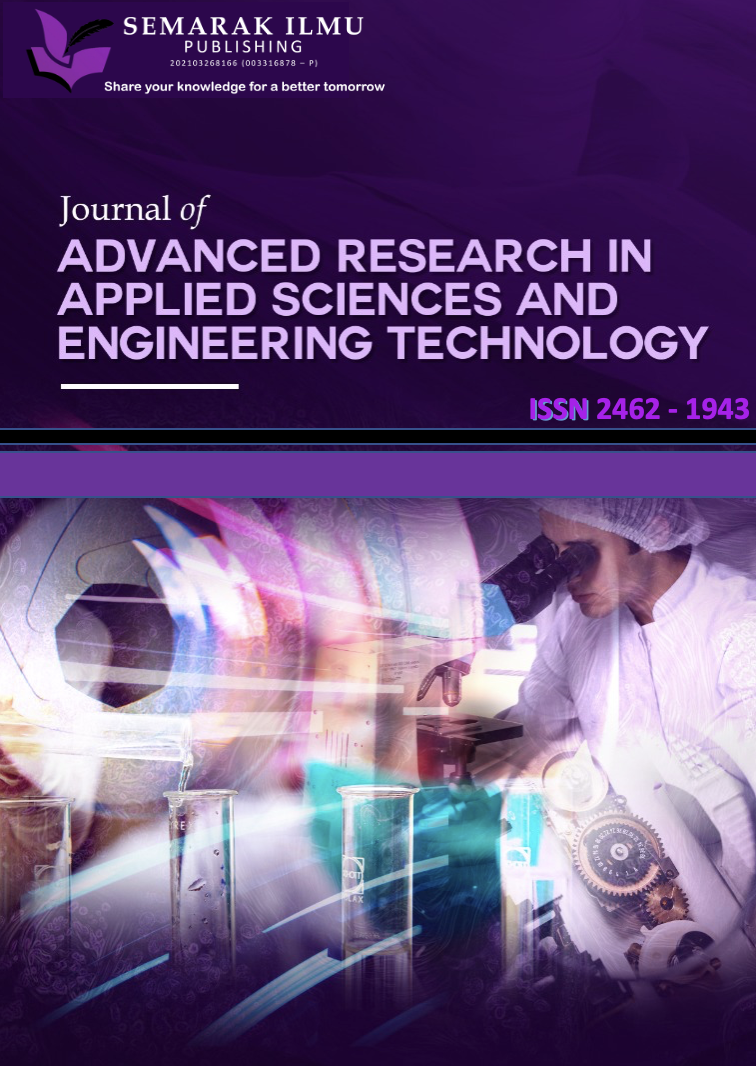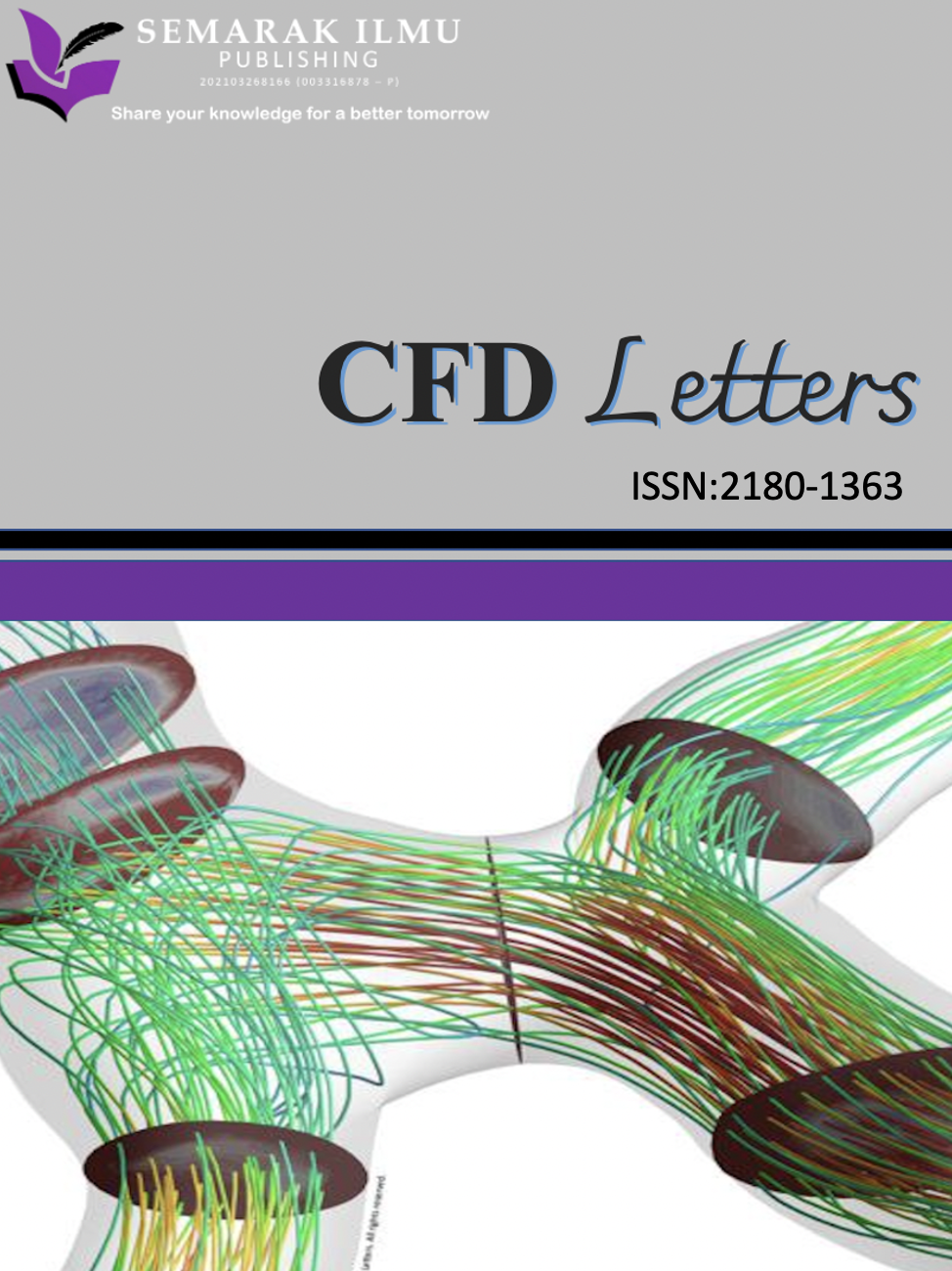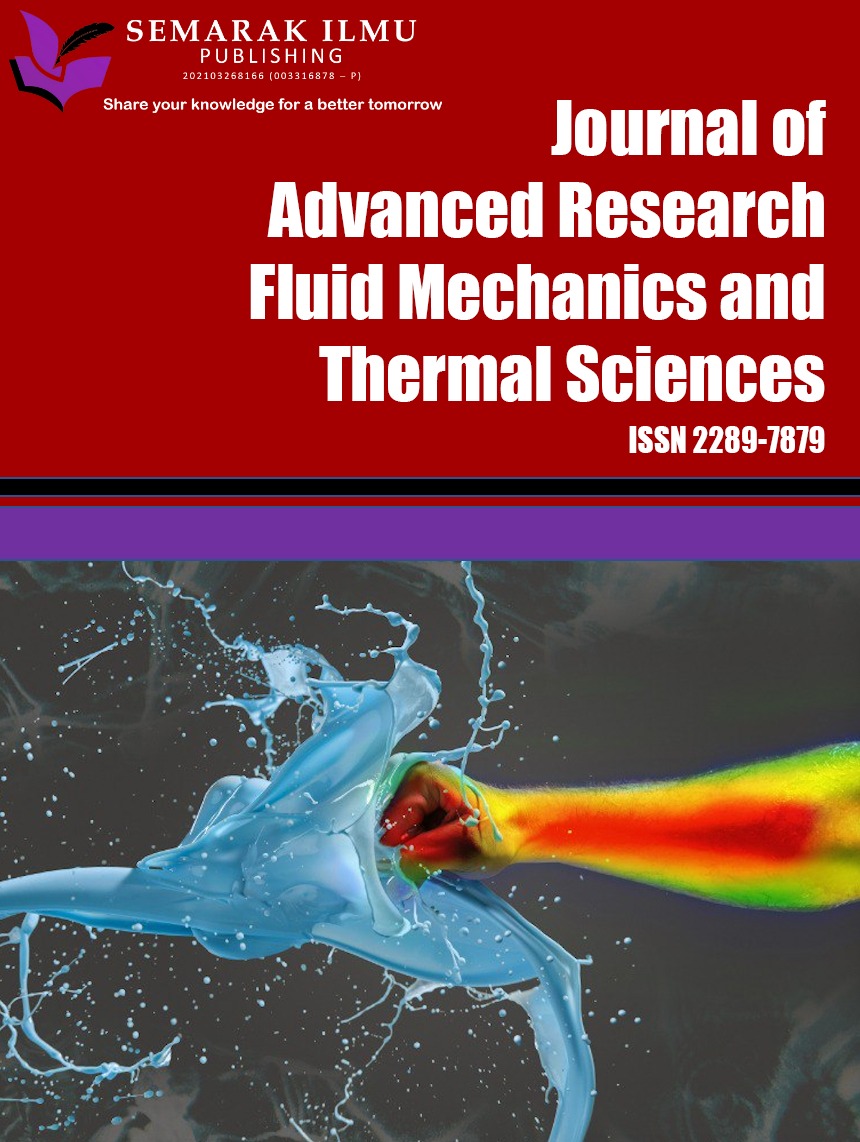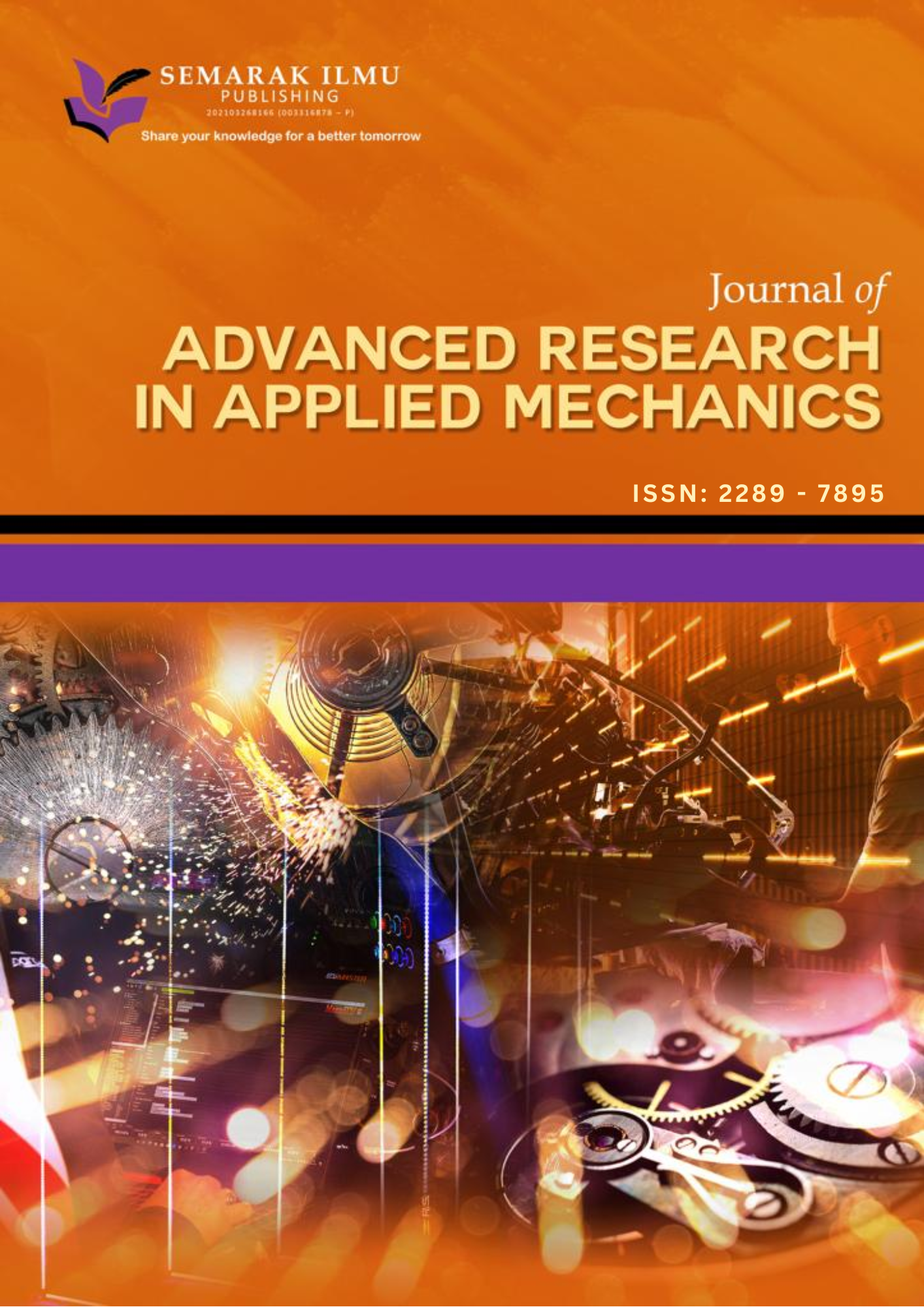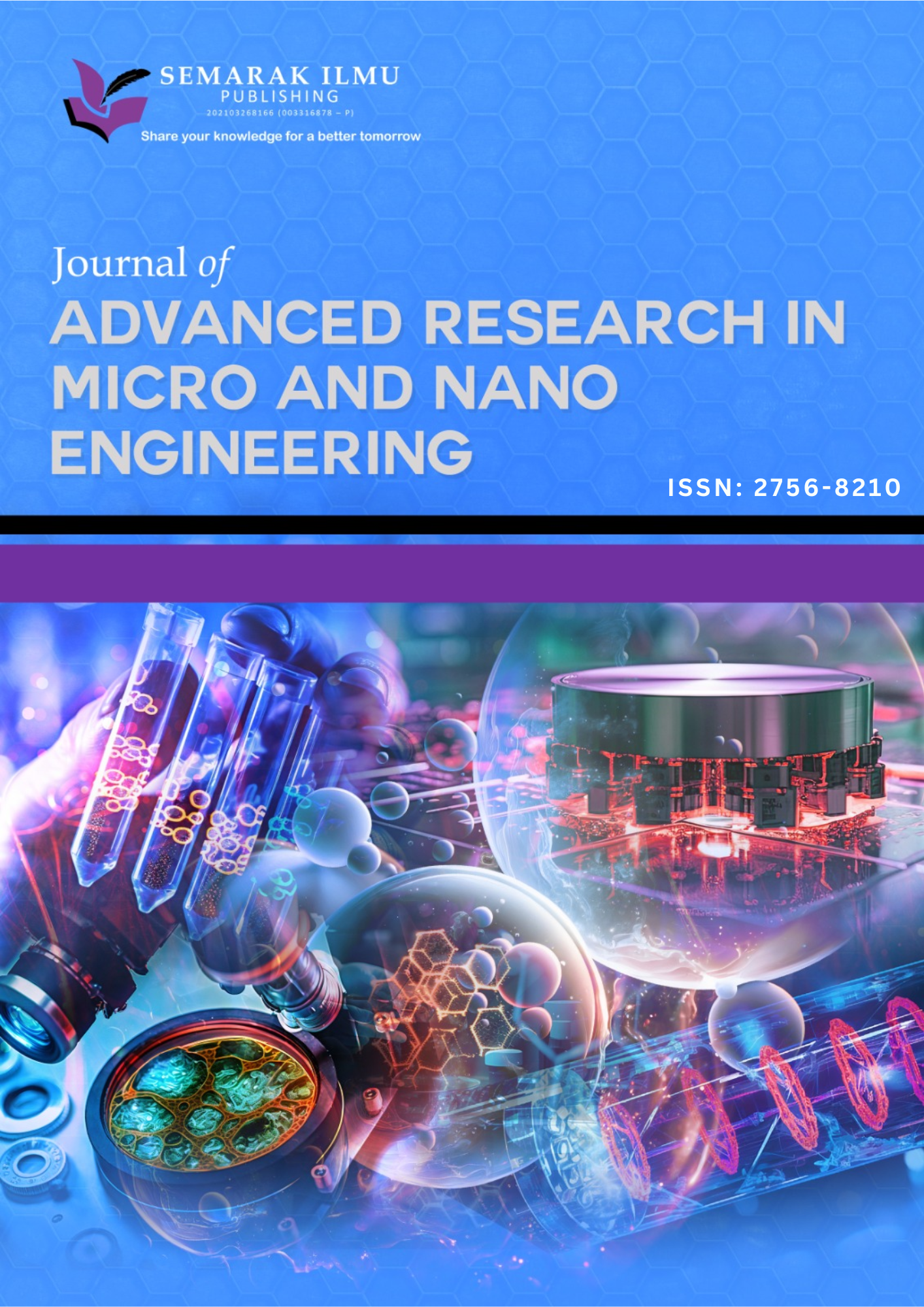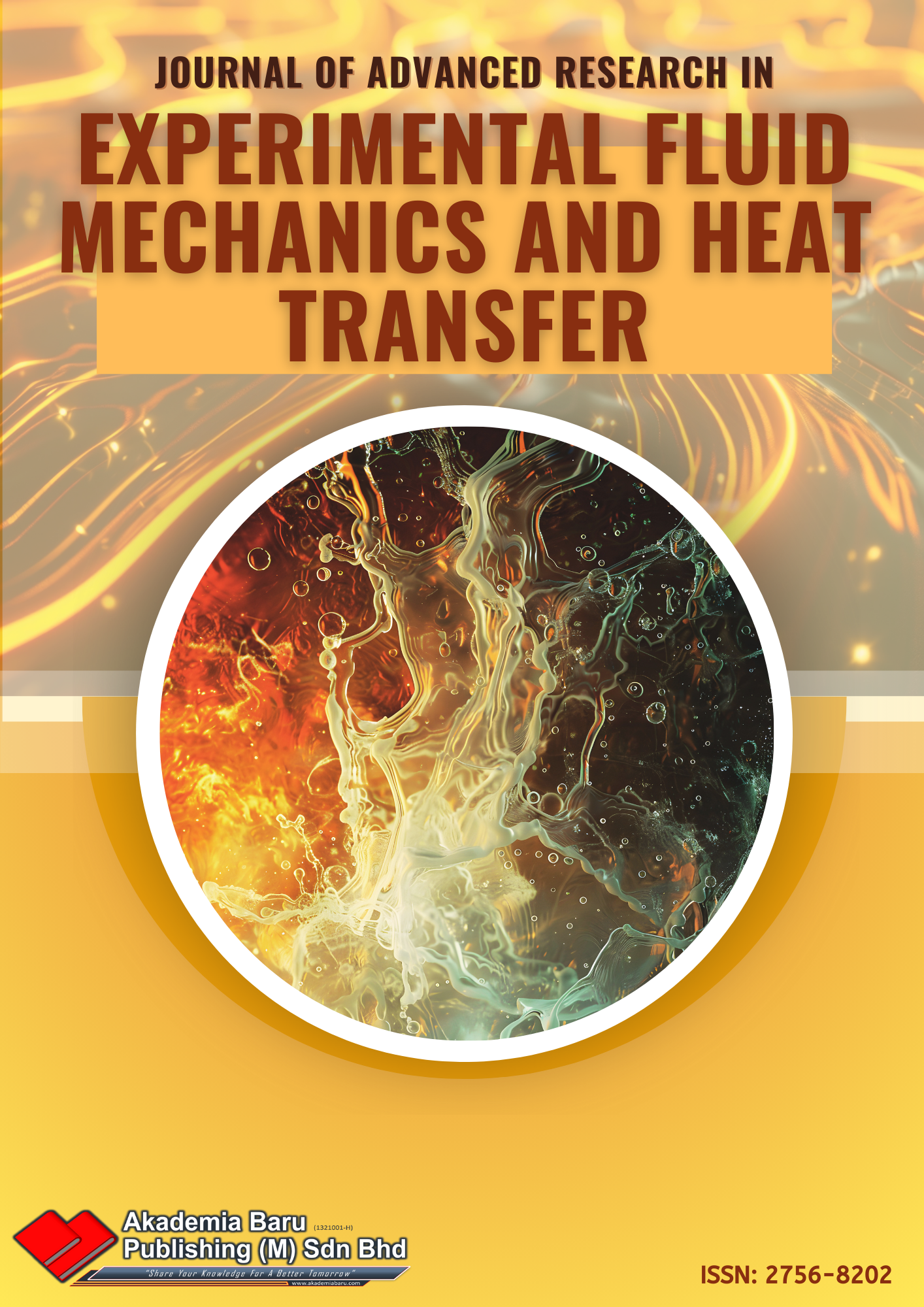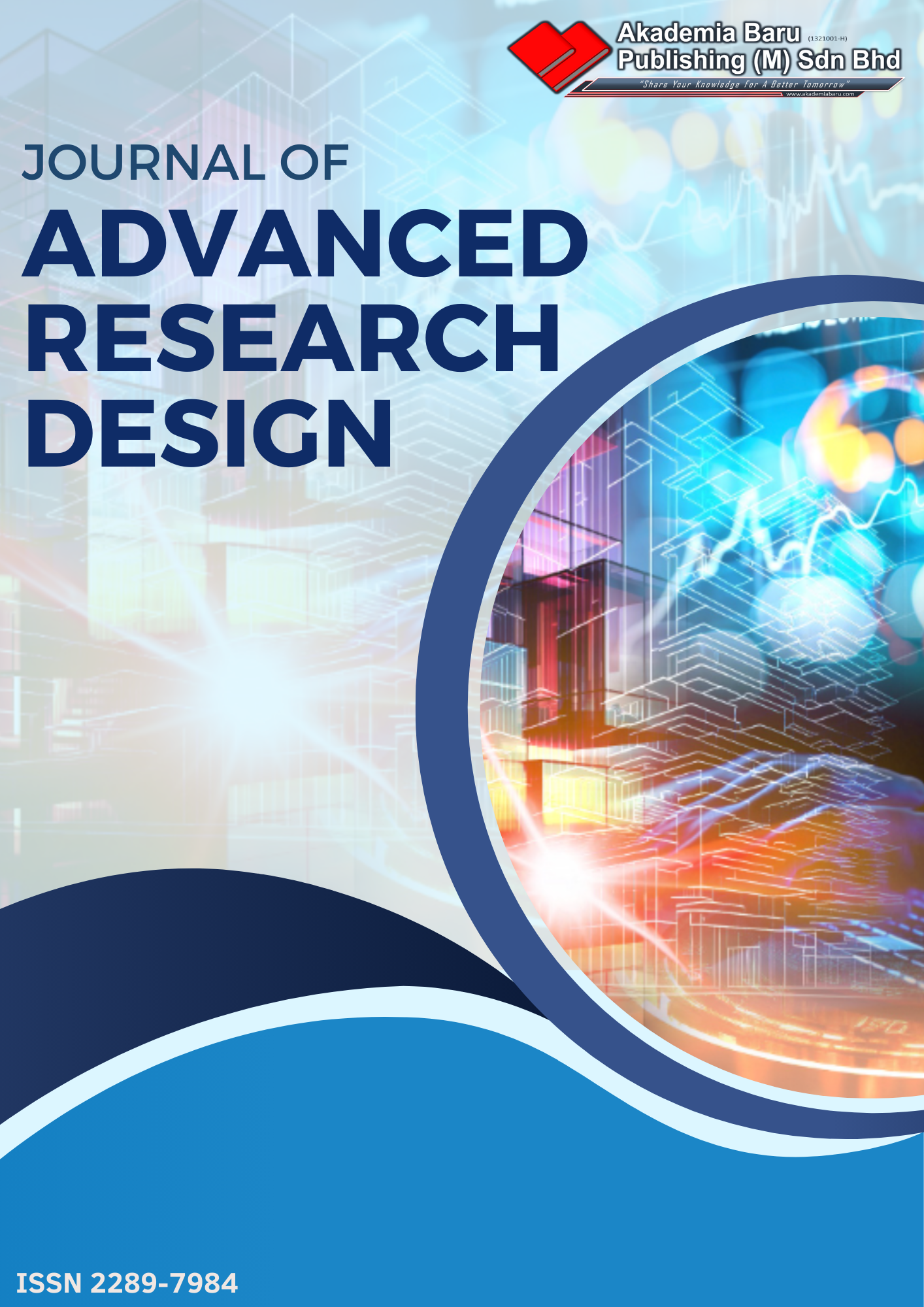Numerical Investigation of Nanofluid-based Flow Behavior and Convective Heat Transfer using Helical Screw
DOI:
https://doi.org/10.37934/arnht.27.1.85106Keywords:
Nanofluid, Flow Behavior, Convective heat transfer, Helical Screw, Tortional turbulatorAbstract
Numerous industrial and home users have made use of heat transfer devices for the purpose of heat conversion and recovery. For the past half-century, engineers have worked tirelessly to perfect a heat exchanger design that cuts down on power use without sacrificing performance. Most methods of improving heat transfer work by either increasing the effective heat transfer surface area or creating turbulence, which results in lower thermal resistance. In this study, CFD was used to simulate Al2O3 and CuO nanoparticles in the adsorber tube of a parabolic solar collector with N=1 and N=2 turbulators at Re=20000, 60000, and 100000, respectively, and a turbulence strength of 5%. The turbulence strength was calculated as 5% of the total energy of the particles. Heat conduction is improved by the presence of nanoparticles in the base fluid. Therefore, nanofluids are candidates for alternative methods of heat transfer. Torsional turbulator models with N=2 have a greater output temp than those with N=1 because N=2 models have a higher practical heat level. The intake temp is raised from 35 to 46 degrees Celsius thanks to the presence of CuO nanoparticles in the two turbulator adsorber tubes that are close to one another. The Reynolds number invariably makes the Nusselt number higher. In addition, the Nusselt number demonstrates that there are a greater number of CuO nanoparticle models than Al2O3 nanoparticle models. In addition, CuO nanoparticles are more effective than Al2O3 at lowering pressure. When compared to the N=2 dual-turbulator mode, the N=1 single-turbulator mode has 34% more conflict. PECs are greater for models with two turbulators. Over a wide range of Reynolds numbers, the thermal PEC for N=2 models were 12 percentage points higher than that of N=1 models. CuO nanofluid receivers are superior to Al2O3 ones in their ability to convert solar energy into thermal energy. The two-turbulator model with a Reynolds number of 100,000 that uses CuO nanoparticles achieves the maximum thermal efficiency.
Downloads
References
Wijayanta, Agung Tri, Tri Istanto, Keishi Kariya, and Akio Miyara. "Heat transfer enhancement of internal flow by inserting punched delta winglet vortex generators with various attack angles." Experimental Thermal and Fluid Science 87 (2017): 141-148. https://doi.org/10.1016/j.expthermflusci.2017.05.002 DOI: https://doi.org/10.1016/j.expthermflusci.2017.05.002
Yaningsih, Indri, Tri Istanto, and Agung Tri Wijayanta. "Experimental study of heat transfer enhancement in a concentric double pipe heat exchanger with different axial pitch ratio of perforated twisted tape inserts." In AIP Conference Proceedings, vol. 1717, no. 1. AIP Publishing, 2016. https://doi.org/10.1063/1.4943436 DOI: https://doi.org/10.1063/1.4943436
Mohammed, H. A., Husam A. Hasan, and M. A. Wahid. "Heat transfer enhancement of nanofluids in a double pipe heat exchanger with louvered strip inserts." International Communications in Heat and Mass Transfer 40 (2013): 36-46. https://doi.org/10.1016/j.icheatmasstransfer.2012.10.023 DOI: https://doi.org/10.1016/j.icheatmasstransfer.2012.10.023
Chougule, Sandesh S., and S. K. Sahu. "Heat transfer and friction characteristics of Al2O3/water and CNT/water nanofluids in transition flow using helical screw tape inserts–a comparative study." Chemical Engineering and Processing: Process Intensification 88 (2015): 78-88. https://doi.org/10.1016/j.cep.2014.12.005 DOI: https://doi.org/10.1016/j.cep.2014.12.005
Yakut, Kenan, and Bayram Sahin. "The effects of vortex characteristics on performance of coiled wire turbulators used for heat transfer augmentation." Applied Thermal Engineering 24, no. 16 (2004): 2427-2438. https://doi.org/10.1016/j.applthermaleng.2004.03.008 DOI: https://doi.org/10.1016/j.applthermaleng.2004.03.008
Naphon, Paisarn. "Experimental investigation the nanofluids heat transfer characteristics in horizontal spirally coiled tubes." International Journal of Heat and Mass Transfer 93 (2016): 293-300. https://doi.org/10.1016/j.ijheatmasstransfer.2015.09.089 DOI: https://doi.org/10.1016/j.ijheatmasstransfer.2015.09.089
Naphon, P., S. Wiriyasart, T. Arisariyawong, and T. Nualboonrueng. "Magnetic field effect on the nanofluids convective heat transfer and pressure drop in the spirally coiled tubes." International journal of heat and mass transfer 110 (2017): 739-745. https://doi.org/10.1016/j.ijheatmasstransfer.2017.03.077 DOI: https://doi.org/10.1016/j.ijheatmasstransfer.2017.03.077
Narrein, K., and H. A. Mohammed. "Influence of nanofluids and rotation on helically coiled tube heat exchanger performance." Thermochimica Acta 564 (2013): 13-23. https://doi.org/10.1016/j.tca.2013.04.004 DOI: https://doi.org/10.1016/j.tca.2013.04.004
Kannadasan, N., K. Ramanathan, and S. Suresh. "Comparison of heat transfer and pressure drop in horizontal and vertical helically coiled heat exchanger with CuO/water based nano fluids." Experimental Thermal and Fluid Science 42 (2012): 64-70. https://doi.org/10.1016/j.expthermflusci.2012.03.031 DOI: https://doi.org/10.1016/j.expthermflusci.2012.03.031
Mohammed, Hussein A., and K. Narrein. "Thermal and hydraulic characteristics of nanofluid flow in a helically coiled tube heat exchanger." International Communications in Heat and Mass Transfer 39, no. 9 (2012): 1375-1383. https://doi.org/10.1016/j.icheatmasstransfer.2012.07.019 DOI: https://doi.org/10.1016/j.icheatmasstransfer.2012.07.019
Hashemi, S. M., and M. A. Akhavan-Behabadi. "An empirical study on heat transfer and pressure drop characteristics of CuO–base oil nanofluid flow in a horizontal helically coiled tube under constant heat flux." International Communications in Heat and Mass Transfer 39, no. 1 (2012): 144-151. https://doi.org/10.1016/j.icheatmasstransfer.2011.09.002 DOI: https://doi.org/10.1016/j.icheatmasstransfer.2011.09.002
Akhavan-Behabadi, M. A., M. Fakoor Pakdaman, and M. Ghazvini. "Experimental investigation on the convective heat transfer of nanofluid flow inside vertical helically coiled tubes under uniform wall temperature condition." International Communications in Heat and Mass Transfer 39, no. 4 (2012): 556-564. https://doi.org/10.1016/j.icheatmasstransfer.2012.02.008 DOI: https://doi.org/10.1016/j.icheatmasstransfer.2012.02.008
Darzi, AA Rabienataj, Mousa Farhadi, Kurosh Sedighi, Shahriar Aallahyari, and Mojtaba Aghajani Delavar. "Turbulent heat transfer of Al2O3–water nanofluid inside helically corrugated tubes: numerical study." International Communications in Heat and Mass Transfer 41 (2013): 68-75. https://doi.org/10.1016/j.icheatmasstransfer.2012.11.006 DOI: https://doi.org/10.1016/j.icheatmasstransfer.2012.11.006
Jaisankar, S., T. K. Radhakrishnan, K. N. Sheeba, and S. Suresh. "Experimental investigation of heat transfer and friction factor characteristics of thermosyphon solar water heater system fitted with spacer at the trailing edge of Left–Right twisted tapes." Energy Conversion and Management 50, no. 10 (2009): 2638-2649. https://doi.org/10.1016/j.enconman.2009.06.019 DOI: https://doi.org/10.1016/j.enconman.2009.06.019
Jaisankar, S., T. K. Radhakrishnan, and K. N. Sheeba. "Experimental studies on heat transfer and thermal performance characteristics of thermosyphon solar water heating system with helical and left–right twisted tapes." Energy Conversion and Management 52, no. 5 (2011): 2048-2055. https://doi.org/10.1016/j.enconman.2010.11.024 DOI: https://doi.org/10.1016/j.enconman.2010.11.024
Jaisankar, S., T. K. Radhakrishnan, and K. N. Sheeba. "Studies on heat transfer and friction factor characteristics of thermosyphon solar water heating system with helical twisted tapes." Energy 34, no. 9 (2009): 1054-1064. https://doi.org/10.1016/j.energy.2009.03.015 DOI: https://doi.org/10.1016/j.energy.2009.03.015
Sivashanmugam, P., and S. Suresh. "Experimental studies on heat transfer and friction factor characteristics of laminar flow through a circular tube fitted with helical screw-tape inserts." Applied Thermal Engineering 26, no. 16 (2006): 1990-1997. https://doi.org/10.1016/j.applthermaleng.2006.01.008 DOI: https://doi.org/10.1016/j.applthermaleng.2006.01.008
Sivashanmugam, P., and S. Suresh. "Experimental studies on heat transfer and friction factor characteristics of turbulent flow through a circular tube fitted with regularly spaced helical screw-tape inserts." Applied Thermal Engineering 27, no. 8-9 (2007): 1311-1319. https://doi.org/10.1016/j.applthermaleng.2006.10.035 DOI: https://doi.org/10.1016/j.applthermaleng.2006.10.035
Sheikholeslami, M., M. Jafaryar, and Zhixiong Li. "Second law analysis for nanofluid turbulent flow inside a circular duct in presence of twisted tape turbulators." Journal of Molecular Liquids 263 (2018): 489-500. https://doi.org/10.1016/j.molliq.2018.04.147 DOI: https://doi.org/10.1016/j.molliq.2018.04.147
Zhang, Xiaoyu, Zhichun Liu, and Wei Liu. "Numerical studies on heat transfer and friction factor characteristics of a tube fitted with helical screw-tape without core-rod inserts." International Journal of Heat and Mass Transfer 60 (2013): 490-498. https://doi.org/10.1016/j.ijheatmasstransfer.2013.01.041 DOI: https://doi.org/10.1016/j.ijheatmasstransfer.2013.01.041
Hasanpour, A., M. Farhadi, and K. Sedighi. "Experimental heat transfer and pressure drop study on typical, perforated, V-cut and U-cut twisted tapes in a helically corrugated heat exchanger." International Communications in Heat and Mass Transfer 71 (2016): 126-136. https://doi.org/10.1016/j.icheatmasstransfer.2015.12.032 DOI: https://doi.org/10.1016/j.icheatmasstransfer.2015.12.032
Sheikholeslami, M., Seyyed Ali Farshad, Ahmad Shafee, and Houman Babazadeh. "Influence of Al2O3 nano powder on performance of solar collector considering turbulent flow." Advanced Powder Technology 31, no. 9 (2020): 3695-3705. https://doi.org/10.1016/j.apt.2020.07.007 DOI: https://doi.org/10.1016/j.apt.2020.07.007
Farshad, Seyyed Ali, and M. Sheikholeslami. "Simulation of nanoparticles second law treatment inside a solar collector considering turbulent flow." Physica A: Statistical Mechanics and its Applications 525 (2019): 1-12. https://doi.org/10.1016/j.physa.2019.03.089 DOI: https://doi.org/10.1016/j.physa.2019.03.089
Soheibi, Haleh, Zahra Shomali, and Jafar Ghazanfarian. "Combined active-passive heat transfer control using slotted fins and oscillation: The cases of single cylinder and tube bank." International Journal of Heat and Mass Transfer 182 (2022): 121972. https://doi.org/10.1016/j.ijheatmasstransfer.2021.121972 DOI: https://doi.org/10.1016/j.ijheatmasstransfer.2021.121972
Rashidi, S., M. Eskandarian, O. Mahian, and S. J. J. O. T. A. Poncet. "Combination of nanofluid and inserts for heat transfer enhancement: gaps and challenges." Journal of Thermal Analysis and Calorimetry 135 (2019): 437-460. https://doi.org/10.1007/s10973-018-7070-9 DOI: https://doi.org/10.1007/s10973-018-7070-9
Alsarraf, Jalal, Amin Shahsavar, Roohollah Babaei Mahani, and Pouyan Talebizadehsardari. "Turbulent forced convection and entropy production of a nanofluid in a solar collector considering various shapes for nanoparticles." International Communications in Heat and Mass Transfer 117 (2020): 104804. https://doi.org/10.1016/j.icheatmasstransfer.2020.104804 DOI: https://doi.org/10.1016/j.icheatmasstransfer.2020.104804
Khetib, Yacine, Khaled Sedraoui, Ammar A. Melaibari, and Radi Alsulami. "The numerical investigation of spherical grooves on thermal–hydraulic behavior and exergy efficiency of two-phase hybrid MWCNT-Al2O3/water nanofluid in a parabolic solar collector." Sustainable Energy Technologies and Assessments 47 (2021): 101530. https://doi.org/10.1016/j.seta.2021.101530 DOI: https://doi.org/10.1016/j.seta.2021.101530
Kumar, Perumal, and Rajamohan Ganesan. "A CFD study of turbulent convective heat transfer enhancement in circular pipeflow." International Journal of Physical and Mathematical Sciences 6, no. 8 (2012): 909-916.







